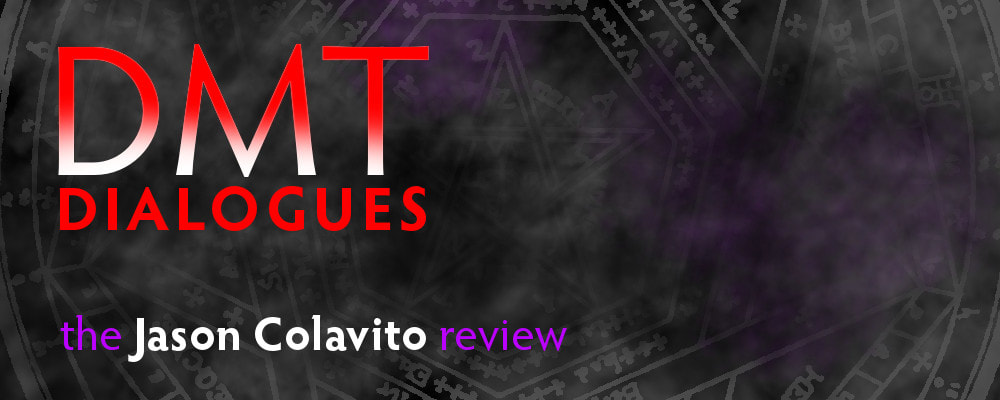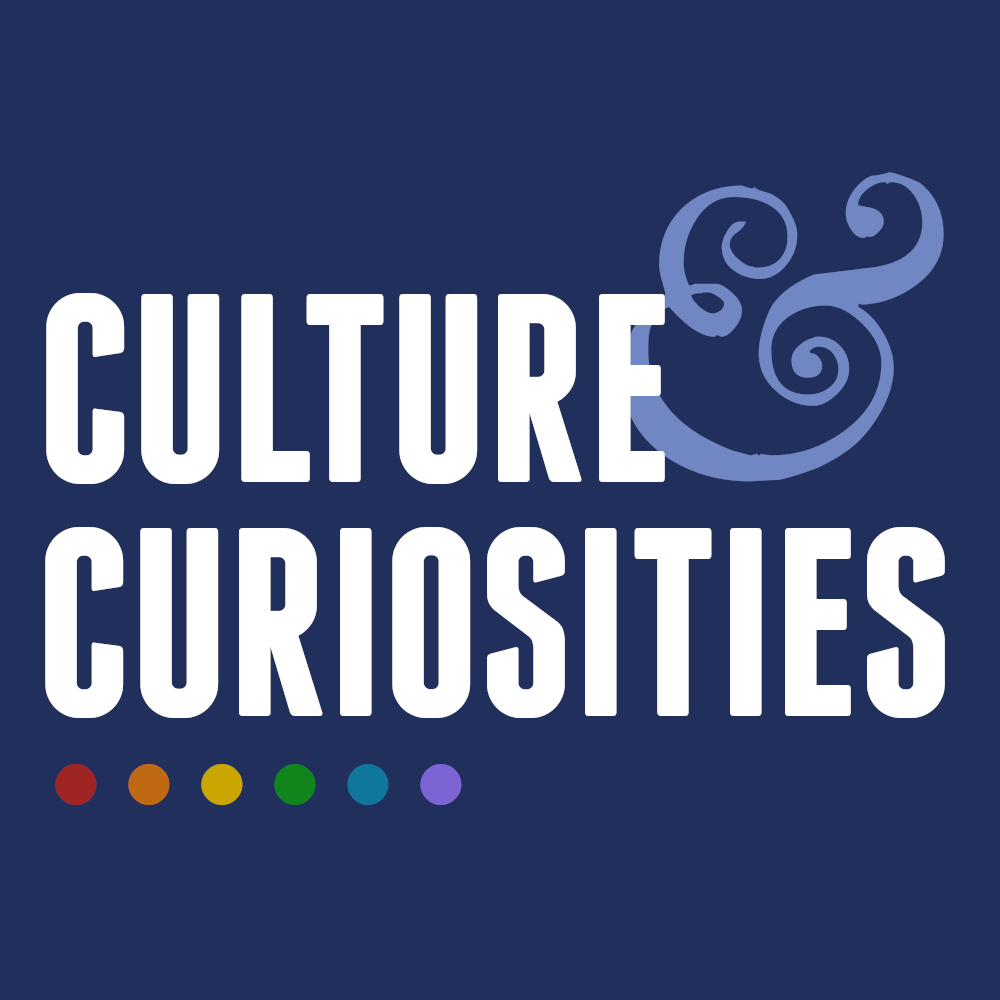|
I wasn’t planning to write an original blog post today, but in the Daily Grail news feed I came across a bizarre claim in an article about the classic Australian movie Picnic at Hanging Rock (1975) that is worth discussing. The film, for those who haven’t seen either it or the recent Australian TV adaptation released in the U.S. by Amazon Prime, revolves around the mysterious disappearance of a number of school girls in the early 1900s while out on a school trip to a rock formation in the woods. Because of the spare, poetic, but plausible depiction of the events in the film, which focus on the guilt and sadness of the survivors, many people wrongly believe that the completely fictional story was based on a real-life event.
23 Comments
Today I thought it might be interesting to profile the ancient city of Akhmim, also known as Chemmis, and Panopolis, mostly on account of the fact that this now-obscure outpost of Egyptian culture has been revealed as the secret source of the collection of Hermetic myths that would give rise to many of the ideas we collectively know today as fringe history. That’s because the stories told at Akhmim about Hermes building great buildings to save knowledge from the Flood transferred over into medieval stories about the scientific wonders of the pyramids of Giza and their supposed antediluvian age, stories that ended up in Victorian pseudoscience and modern fringe history books, like those of Erich von Däniken and Graham Hancock. At least, that’s where I started. I ended up getting side-tracked into a weird, but ultimately quite interesting, discussion of the development of the myth of Hermes Trismegistus from Late Antique syncretism.
Today is Independence Day, and what could be more American than to take a look at how a Frenchman convinced people across the United States that illegal aliens from outer space were threatening their supply of steak and cheese? Today, we’re going to take a look at how Jacques Vallée helped to invent the myth that flying saucers were mutilating cattle. It’s a sad, dumb story, and the short form is: He put it in a movie, so the public believed it because they saw it on screen.
DMT Dialogues: Encounters with the Spirit Module David Luke and Rory Spowers (eds.) | 352 pages | Park Street Press | Aug. 2018 | ISBN: 9781620557471 | $18.99 On Saturday, I wrote a bit about Jason Silva’s recent interview with the Daily Grail discussing awe, wonder, and the connection between altered states of consciousness and the experience of the sublime. I was somewhat critical of Silva’s approach, but after I published my post, Silva contacted me to talk about some of the issues involved. We had a productive and interesting conversation, and I was impressed that he was well-informed and thoughtful in considering some of the more challenging areas of the quest for the sublime. That’s really unusual for a TV personality. Trust me on that. I went to school with enough of them, and have met still more. Silva and I likely won’t agree completely, but it was a refreshing change from the usual round of vitriol and threatened lawsuits from the people whose work I’ve discussed on this blog to have an actually enjoyable conversation. Be sure to check out Silva’s YouTube channel, Shots of Awe, where he posts his thoughts about truth, beauty, science, and philosophy.
The Miracle Club: How Thoughts Become Reality Mitch Horowitz | 192 pages | Inner Traditions | Oct. 2018 | ISBN: 978-1-62055-766-2 | $16.99 Not long ago, I reviewed Gary Lachman’s book Dark Star Rising in which the former Blondie bassist explored Donald Trump’s belief in New Thought, a distinctly American philosophy of wishful thinking in which “right” thought influences the physical world in a magical way. Now TarcherPerigree’s editor-in-chief and occult writer Mitch Horowitz—who published Lachman’s book—has a parallel volume, The Miracle Club, casting the same set of beliefs in a much more positive light, treating New Thought as a complete spiritual path to attaining your heart’s desire. “I argue in this book that, for all its shortcomings, and for all its being disparaged by critics as a dogma of wishful delusion, New Thought, in its essentials, is true—and can be tested in your experience,” he writes. “This is a book of practical use.” It is also a book of practical self-delusion that risks substituting hope for hard work and expectation for experience.
I have been waiting a very long time to report a fun and fascinating story of the “true” origins of the Necronomicon, and now I finally can! Several years ago, Jeb J. Card shared with me some of his intriguing research into the influence of the so-called “Curse of King Tut” on H. P. Lovecraft’s work as well as some conclusions he drew about the parallels between a particular episode in the history of the curse and Lovecraft’s fictitious history of the Necronomicon. I haven’t said anything about it because I have been waiting for Card to publish his findings, which are now in print in the compelling new volume Spooky Archaeology, published this month by the University of New Mexico Press. With the material in print, I can share with you how I accidentally translated the “real” Necronomicon and lived to tell the tale.
Dark Star Rising: Magic and Power in the Age of Trump Gary Lachman | 256 pages | TarcherPerigree | May 2018 | ISBN: 978-0143132066 | ~$17.00 It’s a bit challenging for me to review former Blondie band member and occult historian Gary Lachman’s Dark Star Rising: Magick and Power in the Age of Trump because it straddles the borderline between the serious and the ridiculous in a way that makes me uncomfortable. Lachman’s thesis is that Trump’s rise, and that of the alt-right in general, has been made possible by and helped resuscitate particular strains of occultism. That this is partially true cannot be denied. Trump received support from Richard Spencer, the white nationalist whose erstwhile business partner, Aryan supremacist Jason Reza Jorjani, openly calls for a rejection of monotheism and an embrace Aryan paganism, with its magical rituals and spirituality. But on the other hand, Lachman actually believes in the power of magic and the occult, or seems to, and alludes to supernatural implications that I simply cannot accept. This is half a sober book about right-wing interest in the occult to justify hateful policies, and it is half a bizarre panic attack over fears that evil spiritual entities are pushing the world toward war.
Today I learned that no good deed goes unpunished. As most readers know, I maintain a growing library of important texts related to fringe history and pseudo-archaeology. Since there is no full public domain translation of the Epic of Gilgamesh, and I certainly wasn’t going to pay thousands in licensing fees to use a modern one, I put together my own version from public domain material and my own editorial emendations and additions based on more recent translations. I started from the base of William Muss-Arnolt’s translations, published in 1904, and added in translations of fragments that were discovered and translated in the 1910s and 1920s. Because Muss-Arnolt’s material was in the wrong order, incomplete, and often wrong, I took a pretty strong editorial hand, and about 50% of the text is mine, though I tried to echo Muss-Arnolt closely enough that it isn’t always easy to tell. I don’t claim it as my own translation because, obviously enough, I don’t read cuneiform to work from the primary sources. That’s also why I don’t sell it for a profit; I don’t feel it is enough of my own labor to charge for. But it also isn’t in the public domain. I wrote half of it.
Yesterday, Nephilim theorist L. A. Marzulli announced that he had discovered the smoking gun proving that the apparition of the Virgin Mary at Fatima in 1917 was actually the work of Satan as part of a carefully orchestrated plot involving the Catholic Church, UFOs, and demons. The announcement coincides with the beginning of his publicity campaign for Fatima 2: Electric Boogaloo, er, Fatima 2: Strange Phenomenon, a new documentary he is selling to evangelical Christians.
THE SLENDERMAN MYSTERIES Nick Redfern | 2018 | 288 pages | New Page Books | ISBN: 978-1-63265-112-9 | $15.99 In 2009 a man named Eric Knudsen created photo art of a thin, mysterious supernatural man in a suit, and he posted these photo illustrations to Something Awful, where they became the fodder for countless online stories of a creature soon known as Slender Man, sometimes stylized as Slenderman. In this, it was not entirely different from the fictitious Blair Witch of 1999, or the Cthulhu Mythos of H. P. Lovecraft’s fiction. In each case, a fictitious creation came to be embraced as “real” by fans who should have known better. The story of Slender Man is important, however, because in 2014 two 12-year-old girls lured a third into the woods in Waukesha, Wisconsin and stabbed her 19 times in an effort to impress the Slender Man. The victim survived, but the perpetrators were found not guilty by reason of insanity. Each was sentenced to decades in a mental health facility. The incident undercuts the collective “fun” to be had from pretending a fictitious thing was real.
|
AuthorI am an author and researcher focusing on pop culture, science, and history. Bylines: New Republic, Esquire, Slate, etc. There's more about me in the About Jason tab. Newsletters
Enter your email below to subscribe to my newsletter for updates on my latest projects, blog posts, and activities, and subscribe to Culture & Curiosities, my Substack newsletter.
Categories
All
Terms & ConditionsPlease read all applicable terms and conditions before posting a comment on this blog. Posting a comment constitutes your agreement to abide by the terms and conditions linked herein.
Archives
May 2024
|
- Home
- Blog
- Books
-
Articles
-
Newsletter
>
- Television Reviews >
- Book Reviews
- Galleries >
- Videos
-
Collection: Ancient Alien Fraud
>
- Chariots of the Gods at 50
- Secret History of Ancient Astronauts
- Of Atlantis and Aliens
- Aliens and Ancient Texts
- Profiles in Ancient Astronautics >
- Blunders in the Sky
- The Case of the False Quotes
- Alternative Authors' Quote Fraud
- David Childress & the Aliens
- Faking Ancient Art in Uzbekistan
- Intimations of Persecution
- Zecharia Sitchin's World
- Jesus' Alien Ancestors?
- Extraterrestrial Evolution?
- Collection: Skeptic Magazine >
- Collection: Ancient History >
- Collection: The Lovecraft Legacy >
- Collection: UFOs >
- Scholomance: The Devil's School
- Prehistory of Chupacabra
- The Templars, the Holy Grail, & Henry Sinclair
- Magicians of the Gods Review
- The Curse of the Pharaohs
- The Antediluvian Pyramid Myth
- Whitewashing American Prehistory
- James Dean's Cursed Porsche
-
Newsletter
>
-
The Library
-
Ancient Mysteries
>
-
Ancient Texts
>
- Mesopotamian Texts >
-
Egyptian Texts
>
- The Shipwrecked Sailor
- Dream Stela of Thutmose IV
- The Papyrus of Ani
- Classical Accounts of the Pyramids
- Inventory Stela
- Manetho
- Eratosthenes' King List
- The Story of Setna
- Leon of Pella
- Diodorus on Egyptian History
- On Isis and Osiris
- Famine Stela
- Old Egyptian Chronicle
- The Book of Sothis
- Horapollo
- Al-Maqrizi's King List
- Teshub and the Dragon
- Hermetica >
- Hesiod's Theogony
- Periplus of Hanno
- Ctesias' Indica
- Sanchuniathon
- Sima Qian
- Syncellus's Enoch Fragments
- The Book of Enoch
- Slavonic Enoch
- Sepher Yetzirah
- Tacitus' Germania
- De Dea Syria
- Aelian's Various Histories
- Julius Africanus' Chronography
- Eusebius' Chronicle
- Chinese Accounts of Rome
- Ancient Chinese Automaton
- The Orphic Argonautica
- Fragments of Panodorus
- Annianus on the Watchers
- The Watchers and Antediluvian Wisdom
-
Medieval Texts
>
- Medieval Legends of Ancient Egypt >
- The Hunt for Noah's Ark
- Isidore of Seville
- Book of Liang: Fusang
- Agobard on Magonia
- Book of Thousands
- Voyage of Saint Brendan
- Power of Art and of Nature
- Travels of Sir John Mandeville
- Yazidi Revelation and Black Book
- Al-Biruni on the Great Flood
- Voyage of the Zeno Brothers
- The Kensington Runestone (Hoax)
- Islamic Discovery of America
- The Aztec Creation Myth
-
Lost Civilizations
>
-
Atlantis
>
- Plato's Atlantis Dialogues >
- Fragments on Atlantis
- Panchaea: The Other Atlantis
- Eumalos on Atlantis (Hoax)
- Gómara on Atlantis
- Sardinia and Atlantis
- Santorini and Atlantis
- The Mound Builders and Atlantis
- Donnelly's Atlantis
- Atlantis in Morocco
- Atlantis and the Sea Peoples
- W. Scott-Elliot >
- The Lost Atlantis
- Atlantis in Africa
- How I Found Atlantis (Hoax)
- Termier on Atlantis
- The Critias and Minoan Crete
- Rebuttal to Termier
- Further Responses to Termier
- Flinders Petrie on Atlantis
- Amazing New Light (Hoax)
- Lost Cities >
- OOPARTs
- Oronteus Finaeus Antarctica Map
- Caucasians in Panama
- Jefferson's Excavation
- Fictitious Discoveries in America
- Against Diffusionism
- Tunnels Under Peru
- The Parahyba Inscription (Hoax)
- Mound Builders
- Gunung Padang
- Tales of Enchanted Islands
- The 1907 Ancient World Map Hoax
- The 1909 Grand Canyon Hoax
- The Interglacial Period
- Solving Oak Island
-
Atlantis
>
- Religious Conspiracies >
-
Giants in the Earth
>
-
Fossil Origins of Myths
>
- Fossil Teeth and Bones of Elephants
- Fossil Elephants
- Fossil Bones of Teutobochus
- Fossil Mammoths and Giants
- Giants' Bones Dug Out of the Earth
- Fossils and the Supernatural
- Fossils, Myth, and Pseudo-History
- Man During the Stone Age
- Fossil Bones and Giants
- Mastodon, Mammoth, and Man
- American Elephant Myths
- The Mammoth and the Flood
- Fossils and Myth
- Fossil Origin of the Cyclops
- History of Paleontology
- Fragments on Giants
- Manichaean Book of Giants
- Geoffrey on British Giants
- Alfonso X's Hermetic History of Giants
- Boccaccio and the Fossil 'Giant'
- Book of Howth
- Purchas His Pilgrimage
- Edmond Temple's 1827 Giant Investigation
- The Giants of Sardinia
- Giants and the Sons of God
- The Magnetism of Evil
- Tertiary Giants
- Smithsonian Giant Reports
- Early American Giants
- The Giant of Coahuila
- Jewish Encyclopedia on Giants
- Index of Giants
- Newspaper Accounts of Giants
- Lanier's A Book of Giants
-
Fossil Origins of Myths
>
-
Science and History
>
- Halley on Noah's Comet
- The Newport Tower
- Iron: The Stone from Heaven
- Ararat and the Ark
- Pyramid Facts and Fancies
- Argonauts before Homer
- The Deluge
- Crown Prince Rudolf on the Pyramids
- Old Mythology in New Apparel
- Blavatsky on Dinosaurs
- Teddy Roosevelt on Bigfoot
- Devil Worship in France
- Maspero's Review of Akhbar al-zaman
- The Holy Grail as Lucifer's Crown Jewel
- The Mutinous Sea
- The Rock Wall of Rockwall
- Fabulous Zoology
- The Origins of Talos
- Mexican Mythology
- Chinese Pyramids
- Maqrizi's Names of the Pharaohs
-
Extreme History
>
- Roman Empire Hoax
- American Antiquities
- American Cataclysms
- England, the Remnant of Judah
- Historical Chronology of the Mexicans
- Maspero on the Predynastic Sphinx
- Vestiges of the Mayas
- Ragnarok: The Age of Fire and Gravel
- Origins of the Egyptian People
- The Secret Doctrine >
- Phoenicians in America
- The Electric Ark
- Traces of European Influence
- Prince Henry Sinclair
- Pyramid Prophecies
- Templars of Ancient Mexico
- Chronology and the "Riddle of the Sphinx"
- The Faith of Ancient Egypt
- Remarkable Discoveries Within the Sphinx (Hoax)
- Spirit of the Hour in Archaeology
- Book of the Damned
- Great Pyramid As Noah's Ark
- Richard Shaver's Proofs
-
Ancient Texts
>
-
Alien Encounters
>
-
US Government Ancient Astronaut Files
>
- Fortean Society and Columbus
- Inquiry into Shaver and Palmer
- The Skyfort Document
- Whirling Wheels
- Denver Ancient Astronaut Lecture
- Soviet Search for Lemuria
- Visitors from Outer Space
- Unidentified Flying Objects (Abstract)
- "Flying Saucers"? They're a Myth
- UFO Hypothesis Survival Questions
- Air Force Academy UFO Textbook
- The Condon Report on Ancient Astronauts
- Atlantis Discovery Telegrams
- Ancient Astronaut Society Telegram
- Noah's Ark Cables
- The Von Daniken Letter
- CIA Psychic Probe of Ancient Mars
- Scott Wolter Lawsuit
- UFOs in Ancient China
- CIA Report on Noah's Ark
- CIA Noah's Ark Memos
- Congressional Ancient Aliens Testimony
- Ancient Astronaut and Nibiru Email
- Congressional Ancient Mars Hearing
- House UFO Hearing
- Ancient Extraterrestrials >
- A Message from Mars
- Saucer Mystery Solved?
- Orville Wright on UFOs
- Interdimensional Flying Saucers
- Poltergeist UFOs
- Flying Saucers Are Real
- Report on UFOs
-
US Government Ancient Astronaut Files
>
-
The Supernatural
>
- The Devils of Loudun
- Sublime and Beautiful
- Voltaire on Vampires
- Demonology and Witchcraft
- Thaumaturgia
- Bulgarian Vampires
- Religion and Evolution
- Transylvanian Superstitions
- Defining a Zombie
- Dread of the Supernatural
- Vampires
- Werewolves and Vampires and Ghouls
- Science and Fairy Stories
- The Cursed Car
-
Classic Fiction
>
- Lucian's True History
- Some Words with a Mummy
- The Coming Race
- King Solomon's Mines
- An Inhabitant of Carcosa
- The Xipéhuz
- Lot No. 249
- The Novel of the Black Seal
- The Island of Doctor Moreau
- Pharaoh's Curse
- Edison's Conquest of Mars
- The Lost Continent
- Count Magnus
- The Mysterious Stranger
- The Wendigo
- Sredni Vashtar
- The Lost World
- The Red One
- H. P. Lovecraft >
- The Skeptical Poltergeist
- The Corpse on the Grating
- The Second Satellite
- Queen of the Black Coast
- A Martian Odyssey
- Classic Genre Movies
-
Miscellaneous Documents
>
- The Balloon-Hoax
- A Problem in Greek Ethics
- The Migration of Symbols
- The Gospel of Intensity
- De Profundis
- The Life and Death of Crown Prince Rudolf
- The Bathtub Hoax
- Crown Prince Rudolf's Letters
- Position of Viking Women
- Employment of Homosexuals
- James Dean's Scrapbook
- James Dean's Love Letters
- The Amazing James Dean Hoax!
- James Dean, The Human Ashtray
- Free Classic Pseudohistory eBooks
-
Ancient Mysteries
>
- About Jason
- Search
© 2010-2024 Jason Colavito. All rights reserved.












 RSS Feed
RSS Feed
